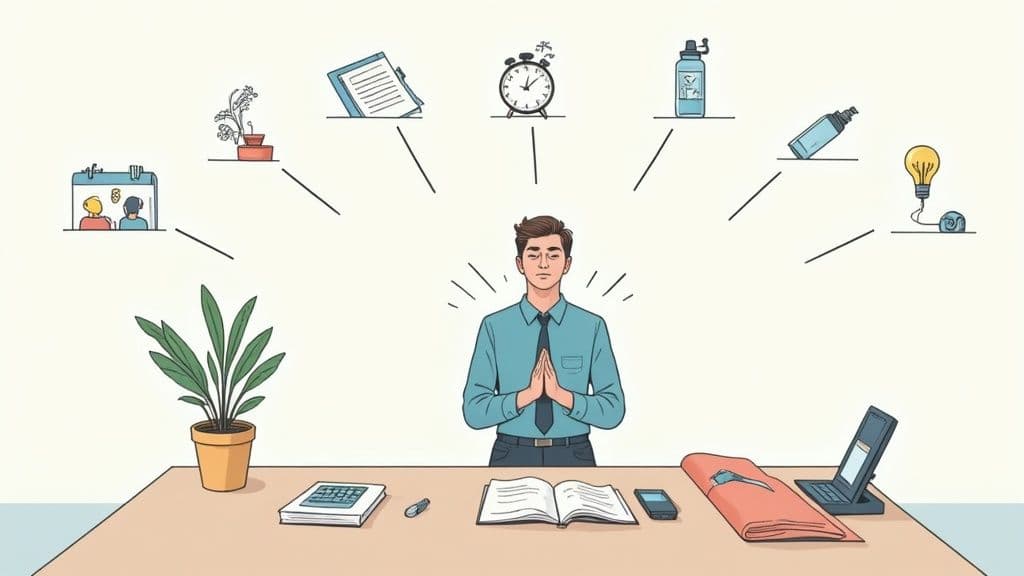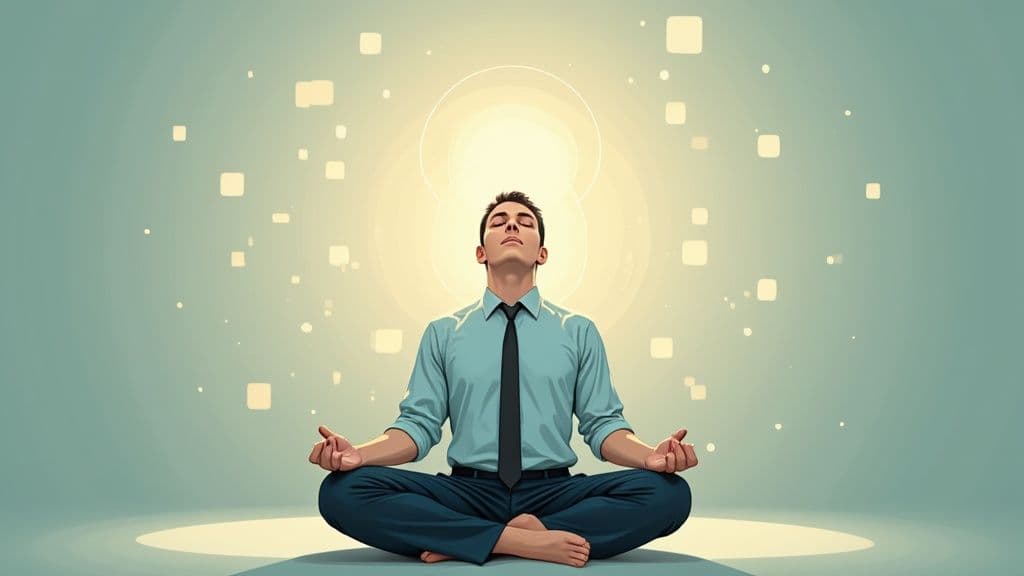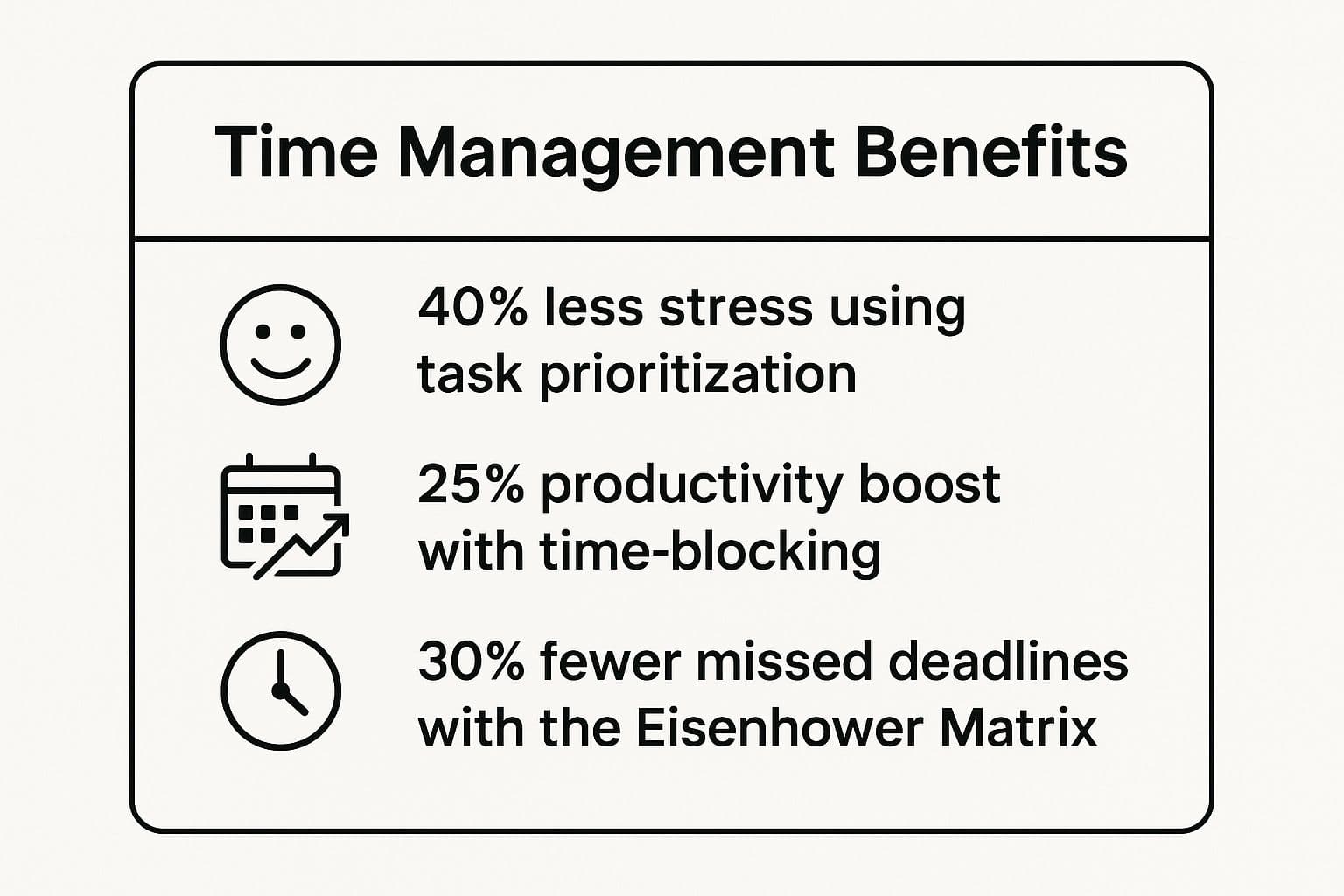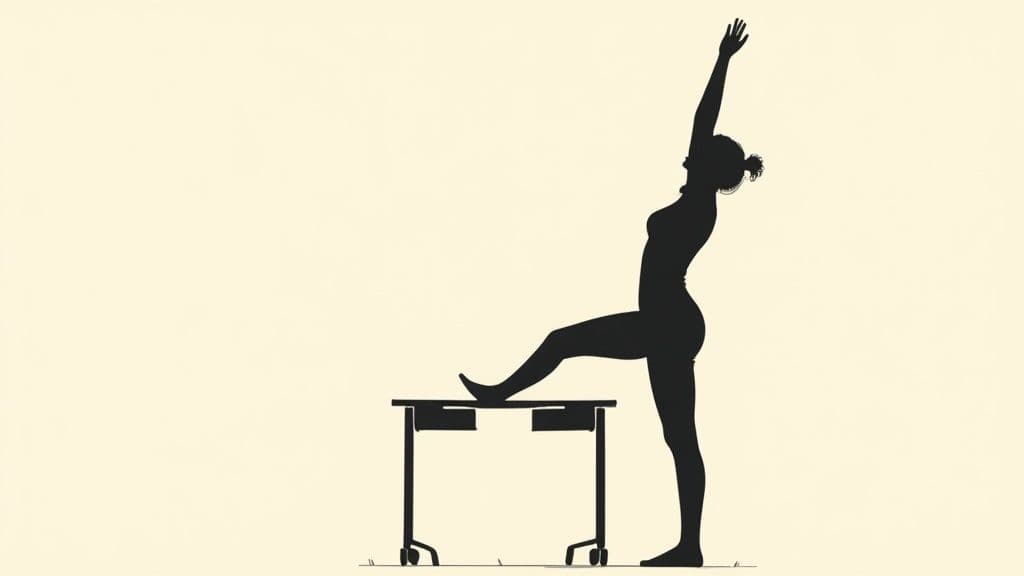Discover ten practical, evidence-based workplace stress management techniques you can start using today to reduce burnout, improve focus, and restore work-life balance.
August 28, 2025 (3mo ago) — last updated November 9, 2025 (1mo ago)
Workplace Stress Relief: 10 Proven Techniques
Ten practical, evidence-based workplace stress management techniques to reduce burnout, boost focus, and build resilience for a healthier work-life.
← Back to blog
Title: Workplace Stress Relief: 10 Proven Techniques
Summary: Ten practical, evidence-based workplace stress management techniques to reduce burnout, boost focus, and build resilience for a healthier work-life.
Introduction: Discover ten practical, evidence-based workplace stress management techniques you can start using today to reduce burnout, improve focus, and restore balance to your work-life.
Workplace Stress: A Practical Toolkit for 2025
Workplace stress is more than a bad day; it’s a pervasive challenge that affects productivity, health, and overall well-being. While performance pressures persist, how you respond to them makes a big difference. This guide moves beyond generic tips to offer ten specific, evidence-based workplace stress management techniques you can implement immediately.
From cognitive strategies that reshape perspective to environmental tweaks that foster calm, these methods build resilience and create a more balanced, sustainable work life. Understanding your strengths and challenges, as described in Dan Millman’s book, “The Life You Were Born to Live,” can further personalize these strategies and make them more meaningful.
Each entry includes actionable steps, practical examples, and clear next steps so you can reduce stress and regain control of your workday.
1. Mindfulness Meditation
Mindfulness meditation focuses your awareness on the present moment, helping you observe thoughts, feelings, and bodily sensations without judgment. This skill breaks the cycle of anxious rumination about deadlines and conflicts, so you can respond with clarity. Organizations such as Google, Salesforce, and Aetna have integrated mindfulness programs and report benefits for employee well-being and performance1. Aetna, for example, reported a roughly $3,000 per-employee productivity improvement after rolling out mindfulness training2.

Why it works
Mindfulness reduces the “fight or flight” response and improves emotional regulation and focus.
How to implement
- Start small: try 5-minute guided sessions during lunch.
- Use apps like Headspace or Calm.
- Find a quiet space: a conference room, quiet corner, or your car.
- Anchor your focus to your breath and gently return when your mind wanders.
Explore related resources on employee wellness and self-discovery at Life Purpose App.
2. Deep Breathing Techniques
Controlled breathing patterns activate the body’s relaxation response. By slowing and deepening your breath you can counteract acute workplace stress before it escalates.

Why it works
Deliberate breathing stimulates the vagus nerve and the parasympathetic system, lowering heart rate and cortisol. Many modern devices and apps include breathing prompts—Apple’s Breath app and other wellness integrations are designed for quick, guided sessions3. Simple patterns like box breathing are used by high-pressure professionals for composure and focus4.
How to implement
- Try box breathing: inhale 4, hold 4, exhale 4, hold 4; repeat 3–5 cycles.
- Use the 4-7-8 method: inhale 4, hold 7, exhale 8.
- Set hourly reminders to take three intentional breaths.
- Practice diaphragmatic breathing by placing a hand on your belly and feeling it expand.
3. Time Management and Prioritization
Structured time management reduces overwhelm and helps you focus on what matters most, shifting you from reactive to proactive work.

Why it works
Frameworks like Kanban and agile visualize workflow, limit work-in-progress, and reduce bottlenecks—approaches used by Toyota and many software teams to lower stress and improve throughput56.
How to implement
- Use the Eisenhower Matrix to sort tasks by urgency and importance.
- Time-block your calendar and treat blocks as appointments.
- Apply the 80/20 rule to focus on the highest-impact tasks.
- Batch similar tasks (email blocks, call blocks).
For team-level strategies, see our internal guide on workload management.
4. Progressive Muscle Relaxation (PMR)
PMR involves tensing and releasing muscle groups to grow awareness of tension and intentionally relax the body—a direct counter to stress-related physical symptoms like tight shoulders or jaw.
Why it works
Tensing and releasing muscles triggers deep relaxation, reduces physical stress markers, and disrupts the cycle between mental anxiety and bodily tension.
How to implement
- Start with major muscle groups: hands, arms, face, shoulders, legs.
- Hold tension 5–7 seconds, then release for 15–20 seconds.
- Use guided PMR recordings when learning.
- Try shortened versions at your desk focusing on hands, face, and shoulders.
5. Cognitive Reframing
Cognitive reframing teaches you to identify and challenge negative thought patterns so stressful events feel more manageable. Rooted in cognitive behavioral therapy (CBT), it changes how you interpret workplace challenges.
Why it works
Reframing interrupts automatic negative thoughts and builds long-term resilience by changing neural pathways associated with stress7.
How to implement
- Question automatic thoughts: “Is this interpretation 100% accurate?”
- Look for evidence for and against your assumptions.
- Practice the three-case method: best-case, worst-case, and most-likely-case scenarios.
- Keep a thought journal to spot recurring patterns.
Learn more about emotional intelligence and resilience at our mental health resources.
6. Physical Exercise and Movement
Regular movement lowers cortisol and raises endorphins. Adding activity to your workday improves mood, energy, and cognitive resilience.

Why it works
Exercise reorganizes the brain to be more resilient to stress, as described in Dr. John Ratey’s research on exercise and brain function8.
How to implement
- Suggest walking meetings for one-on-one or small group sessions.
- Use micro-breaks: stand, stretch, or walk for a few minutes every hour.
- Dedicate 15–20 minutes of your lunch break to a brisk walk.
- Choose stairs over elevators and park a bit farther to increase daily steps.
7. Setting Boundaries and Saying No
Healthy boundaries protect your time, energy, and focus. Saying no prevents overcommitment and preserves capacity for priority work.
Why it works
Unclear boundaries invite burnout. Companies with clear after-hours policies and well-managed scope control see better retention and mental health outcomes.
How to implement
- Communicate your working hours and avoid checking messages outside them.
- Offer alternatives when you can’t take on a task.
- Use delaying tactics: “Let me check my calendar and get back to you.”
- Be direct and professional when declining requests.
For project teams, review our internal tips on how to prevent scope creep.
8. Social Support and Communication
Building workplace connections creates emotional and practical support. Strong relationships turn individual challenges into shared problems and reduce isolation.
Why it works
Positive relationships trigger oxytocin and counter cortisol. Longitudinal research shows that close relationships are a key predictor of health and happiness across the lifespan9.
How to implement
- Schedule regular coffee chats or lunches to build rapport.
- Practice active listening to strengthen trust.
- Join or create Employee Resource Groups and mentor programs.
- Offer and ask for help to foster reciprocal support.
9. Workspace Environment Optimization
Your physical environment affects stress, focus, and comfort. Reducing clutter, improving ergonomics, and adding natural elements can lower cognitive load and increase well-being.
Why it works
A tidy, ergonomic, and well-lit workspace reduces friction and supports sustained productivity. Many companies invest in biophilic design and ergonomic furniture to support employee health10.
How to implement
- Declutter and organize to free up mental space.
- Embrace ergonomics: monitor at eye level, neutral posture, feet flat.
- Maximize natural light and use noise-canceling headphones if needed.
- Add a plant or two to bring nature into your workspace.
10. Breaks and Recovery Periods
Planned breaks prevent mental fatigue and support sustained performance. Treat rest as part of the work cycle rather than an interruption.
Why it works
Working in focused sprints and taking regular breaks aligns with natural alertness cycles and can improve productivity. Trials such as Microsoft Japan’s four-day workweek experiment showed notable productivity gains after schedule changes focused on recovery and efficiency11.
How to implement
- Use the Pomodoro Technique: 25 minutes focused, 5 minutes break12.
- Take hourly micro-breaks to reset your eyes and posture.
- Protect your lunch break and disconnect from work.
- Create transition rituals to mark the end of major tasks.
Quick Comparison: When to Use Each Technique
| Method | Best for | Time to Practice |
|---|---|---|
| Deep breathing | Acute stress moments | 1–5 minutes |
| Short mindfulness | Emotional regulation | 5–15 minutes daily |
| Time blocking | High workload | 30–60 minutes planning weekly |
| PMR | Physical tension | 10–25 minutes session |
| Cognitive reframing | Recurrent negative thinking | Ongoing practice |
| Exercise | Long-term resilience | 20–45 minutes most days |
| Boundaries | Overcommitment | Communication practice |
| Social support | Isolation and problem-solving | Ongoing networking |
| Workspace tweaks | Chronic distraction | One-time setup + maintenance |
| Breaks | Mental fatigue | Frequent short breaks + protected time off |
Build a Personalized Stress Resilience Plan
Start small and be consistent. Pick one or two techniques that fit your current needs and commit to them. Track your stress before and after implementing a practice to see what truly helps.
If you want to align these methods with your personal strengths, Dan Millman’s system in “The Life You Were Born to Live” and the Life Purpose App can add a layer of self-awareness to help you choose the most effective techniques for your nature.
Common Questions (Q&A)
Q: Which technique gives the fastest relief when I feel overwhelmed?
A: Deep breathing and short grounding mindfulness exercises work fastest—both can lower heart rate and reduce anxiety in one to five minutes.
Q: How do I make these practices stick with a busy schedule?
A: Start with micro-habits—two minutes of mindfulness, hourly micro-breaks, or three deep breaths at transition points—and build consistency before increasing time.
Q: How do I choose the right technique for my team?
A: Assess the main stressors—deadlines, physical strain, unclear roles—and pick one organizational-level change (time-blocking, workload distribution, ergonomics) plus one individual skill (breathing, boundary setting) to pilot.
Ready to explore deeper patterns behind your stress and select techniques tailored to your nature? Discover your life path and personalized suggestions with the Life Purpose App at https://lifepurposeapp.com.
Discover Your Life Purpose Today!
Unlock your true potential and find your life’s purpose.
